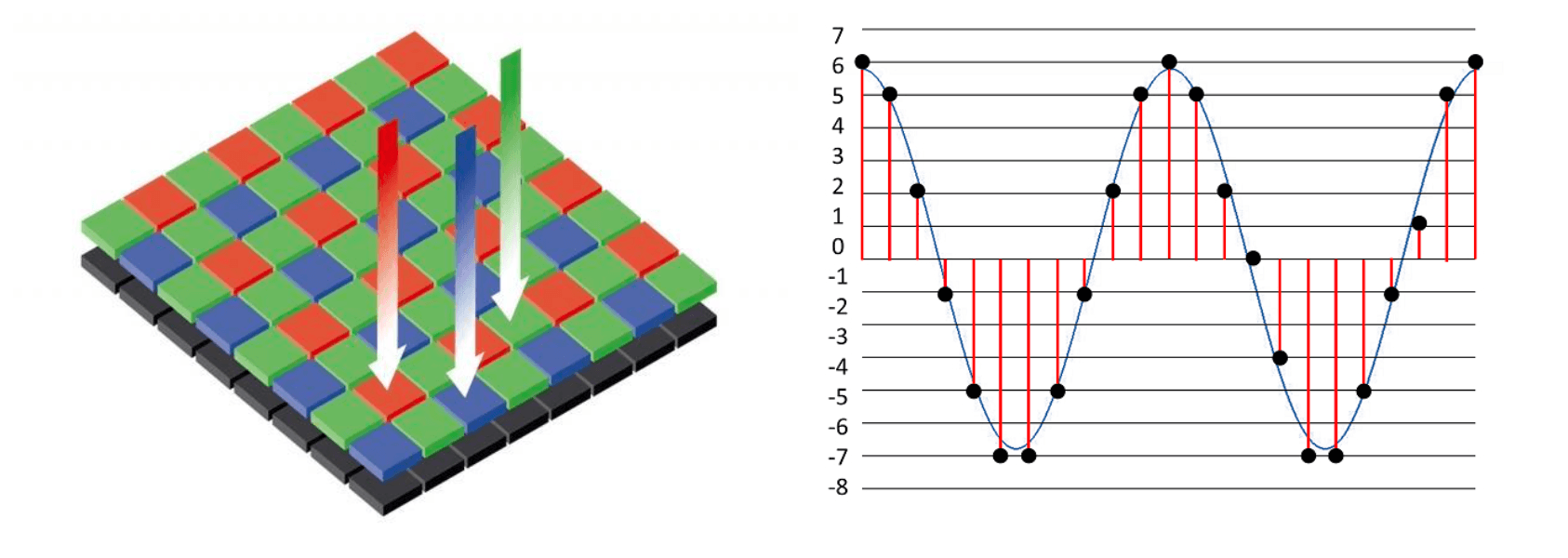In the world of Over-the-Top (OTT) and Real-Time Communication (RTC) technologies, understanding the types of devices and data involved is crucial. This blog post will explore the various devices that serve as data sources and the types of audio-video data they produce, as well as the processes of capture and preprocessing.
Devices as Data Sources
In the context of OTT and RTC, a "device" refers to any source that generates audio-video data. These can be broadly categorized into two types:
Hardware Devices:
- Smartphone cameras
- Professional video cameras
- Microphones
- Capture cards
Software-based Sources:
- Virtual cameras
- Computer desktop capture
- Media files
Essentially, any source capable of producing valid audio-video data can be defined as a device in this context.
Types of Audio-Video Data
The data produced by these devices primarily falls into two categories:
1. Video Data
Video data consists of color information for each pixel in a frame. There are two main color standards used to represent this data:
RGB (Red, Green, Blue):
- Combines red, green, and blue light in various proportions to create all colors.
- Variants include RGB565, RGB24, BGRA32, etc.
YUV:
- Based on human eye's higher sensitivity to brightness than color.
- Y represents luminance, U and V represent chrominance.
- YUV420 is a common format, with sub-variants like I420, NV12, NV21.
- Typically requires less bandwidth than RGB, making it suitable for network transmission.

2. Audio Data
Audio data consists of waveform data made up of sound sampling points. The most common standard for representing audio is PCM (Pulse Code Modulation):
- PCM (Pulse Code Modulation):
- Represents digital signals produced by sampling, quantizing, and encoding continuous analog signals.
- Common PCM type is PCM16, often using 48000Hz or 44100Hz sample rate, 16-bit sample width, and mono or stereo channels.
Data Capture and Preprocessing
Capture
Capturing refers to the process of obtaining audio-video data from devices. Modern operating systems typically provide APIs for device capture operations (open, read, write, close), allowing developers to easily access data from cameras, microphones, screen displays, or even speaker output.
Preprocessing
After capture, the data often undergoes preprocessing. This can involve various operations:
Video Preprocessing:
- Applying filters
- Facial beautification
- Adding dynamic effects
The principle behind video preprocessing, such as applying filters, involves transforming the color values of each pixel in every video frame according to specific rules. More advanced operations like facial beautification require facial recognition algorithms to identify face regions before applying color transformations.
Audio Preprocessing:
- Voice changing
- Adding background music
- Audio mixing
- Noise reduction
Audio preprocessing typically involves modifying the sound waveform. For instance, mixing combines two or more waveforms using specific algorithms, while noise reduction removes background noise from the waveform.
It's worth noting that these preprocessing operations, especially for video, can be computationally intensive. On lower-performance hardware, this can lead to issues like overheating or high CPU usage.
Developer Considerations
While it's possible for developers to implement their own capture and preprocessing operations, this approach requires a deep understanding of audio-video data manipulation and ensuring data format correctness. For most applications, it's recommended to use established APIs and libraries for these operations.
Conclusion
Understanding the types of devices and data involved in OTT and RTC systems, as well as the processes of capture and preprocessing, is fundamental for developers working in this field. As these technologies continue to evolve, staying updated with the latest standards and best practices in audio-video data handling will be crucial for creating high-quality, efficient OTT and RTC applications.